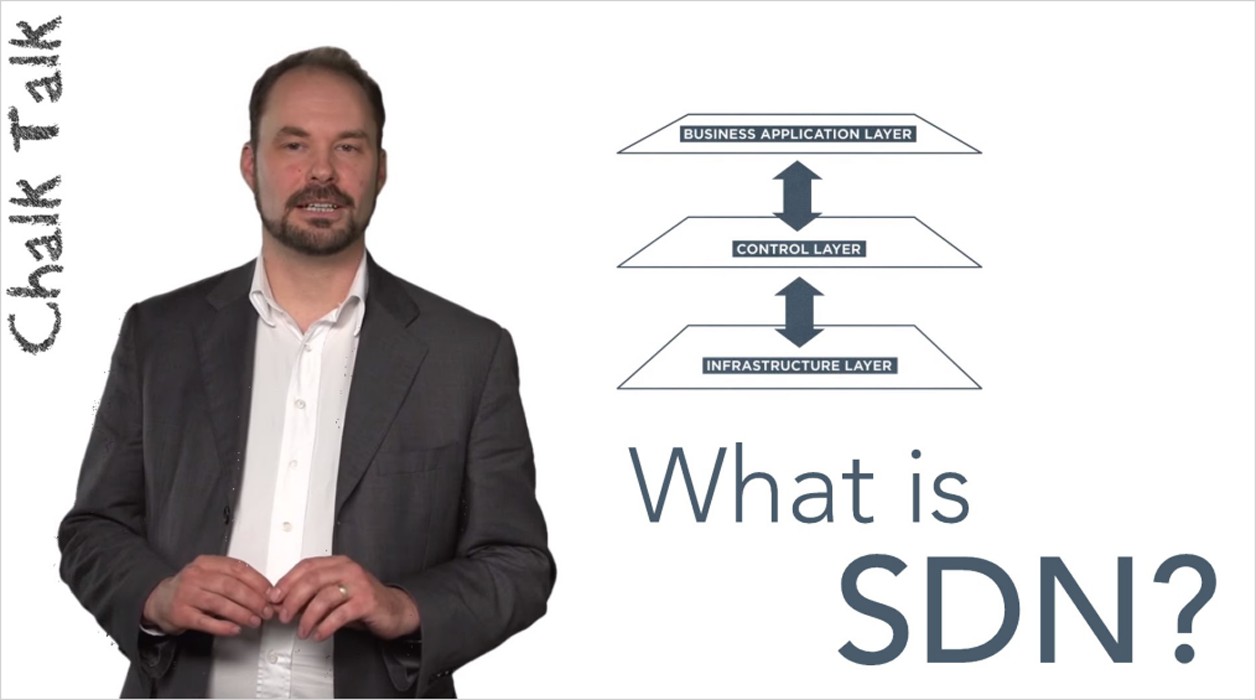What is Software-Defined Networking (SDN)?
Software-Defined Networking (SDN) is a network architecture approach that enables the network to be intelligently and centrally controlled, or ‘programmed,’ using software applications. This helps operators manage the entire network consistently and holistically, regardless of the underlying network technology.
Enterprises, carriers, and service providers are being surrounded by a number of competing forces. The monumental
growth in multimedia content, the explosion of cloud computing, the impact of increasing mobile usage, and
continuing business pressures to reduce costs while revenues remain flat are all converging to wreak havoc on
traditional business models.
To keep pace, many of these players are turning to SDN technology to revolutionize network design and operations.
SDN enables the programming of network behavior in a centrally controlled manner through software applications using
open APIs. By opening up traditionally closed network platforms and implementing a common SDN control layer,
operators can manage the entire network and its devices consistently, regardless of the complexity of the underlying
network technology.
SDN enables consistent management of the network, which may be made up of complex technology parts.
There are four critical areas in which SDN technology can make a difference for an organization.
1) Network programmability: SDN enables network behavior to be controlled by the software that
resides beyond the networking devices that provide physical connectivity. As a result, network operators can tailor
the behavior of their networks to support new services, and even individual customers. By decoupling the hardware
from the software, operators can introduce innovative, differentiated new services rapidly—free from the
constraints of closed and proprietary platforms.
2) Logically centralize intelligence and control: SDN is built on logically centralized network topologies, which enable intelligent
control and management of network resources. Traditional network control methods are distributed. Devices function
autonomously with limited awareness of the state of the network. With the kind of centralized control an SDN-based
network provides, bandwidth management, restoration, security, and policies can be highly intelligent and
optimized—and an organization gains a holistic view of the network.
3) Abstraction of the network: Services and applications running on SDN technology are abstracted
from the underlying technologies and hardware that provide physical connectivity from network control. Applications
will interact with the network through APIs, instead of management interfaces tightly coupled to the hardware.
4) Openness: SDN architectures usher in a new era of openness—enabling
multi-vendor interoperability as well as fostering a vendor-neutral ecosystem. Openness comes from the SDN approach
itself. The open APIs support a wide range of applications, including cloud orchestration, OSS/BSS, SaaS, and
business-critical networked apps. In addition, intelligent software can control hardware from multiple vendors with
open programmatic interfaces like OpenFlow. Finally, from within the SDN, intelligent network services and
applications can run within a common software environment.
A key advantage of SDN technology is the ability for network operators to write programs that utilize SDN APIs and
give applications control over network behavior. SDN allows users to develop network-aware applications,
intelligently monitor network conditions, and automatically adapt the network configuration as needed.
Ciena understands the challenge of rapid bandwidth growth. The Blue Planet approach to SDN is based on a hybrid model
in which control functions such as end-to-end network visibility, policy, and bandwidth management are concentrated
in the logically centralized SDN Controller. Not everything is centralized, though. Control functions such as fault
recovery, monitoring, security, which all benefit from being distributed, remain embedded in the network elements.


















![Toni Kroos là ai? [ sự thật về tiểu sử đầy đủ Toni Kroos ]](https://evbn.org/wp-content/uploads/New-Project-6635-1671934592.jpg)


